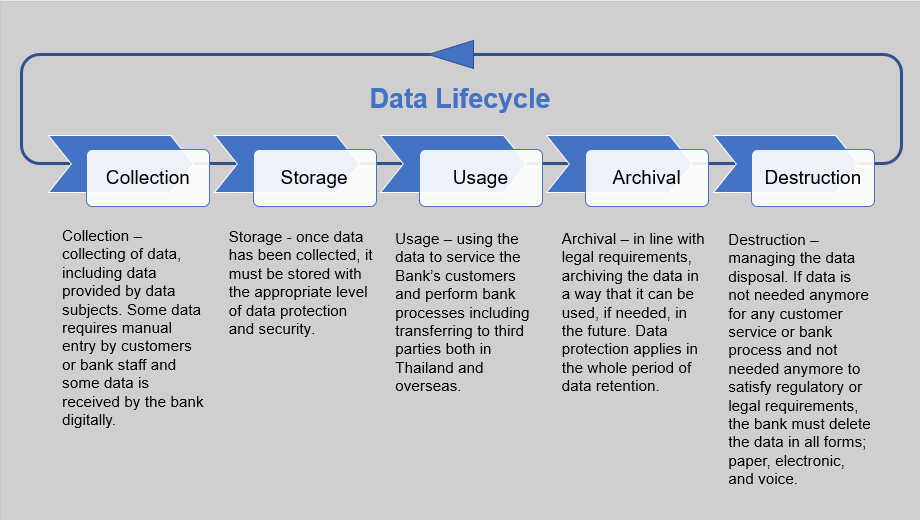The Effect of Effective Data Destruction on Cyber Security Danger Monitoring
The Effect of Effective Data Destruction on Cyber Security Danger Monitoring
Blog Article
The Necessary Nature of Information Devastation in Upholding Computer System Security Services and Protecting Versus Unauthorized Access
In a period where information violations and identification burglary are increasingly prevalent, the relevance of reliable data damage can not be overstated. Organizations needs to acknowledge that the failure to appropriately deal with sensitive details positions not only lawful and economic threats but additionally a possible erosion of client count on. Different techniques, from data cleaning to physical destruction, work as vital safeguards versus unapproved accessibility. Nonetheless, understanding the ramifications of information damage methods and compliance with guidelines raises necessary concerns about the adequacy of current methods and their lasting feasibility in the face of advancing dangers.
Value of Data Devastation
In an increasingly electronic globe, the relevance of data destruction can not be overemphasized. As organizations collect huge amounts of sensitive details, the possible effects of failing to effectively manage and get rid of of that data end up being progressively extreme. Data violations, identity burglary, and company espionage present significant hazards, highlighting the necessity of efficient data damage techniques.

Additionally, as technology evolves, so also do the techniques whereby destructive stars look for to make use of delicate info. Organizations should remain proactive and alert in their information destruction techniques to safeguard against these evolving threats. By prioritizing data damage, firms not only protect their possessions yet also foster trust amongst clients and stakeholders, demonstrating a commitment to accountable data monitoring and security methods.
Techniques of Effective Information Damage
To ensure the permanent and total destruction of sensitive data, companies can employ a range of effective approaches tailored to their details requirements. Among the most typical approaches is information wiping, which involves making use of specialized software application to overwrite existing data multiple times, making recuperation essentially difficult. This is specifically useful for hard disk drives and solid-state drives, where traditional deletion approaches are poor.
One more efficient strategy is degaussing, which makes use of strong electromagnetic fields to interrupt the magnetic domains on storage media, making the data irretrievable. This technique is particularly fit for magnetic storage space gadgets, such as disk drive and difficult disks.
Physical devastation is also a practical option, entailing the shredding, squashing, or incineration of storage space devices. This technique warranties that data can not be recouped, making it excellent for organizations dealing with highly delicate details.

Conformity With Data Security Laws
Organizations must not just concentrate on reliable information damage approaches but likewise make sure compliance with information defense guidelines that govern how sensitive information is taken care of and gotten rid of. Following these laws is essential for maintaining and securing individual information consumer depend on. Laws such as the General Information Security Regulation (GDPR) in the European Union and the Wellness Insurance Portability and Liability Act (HIPAA) in the USA enforce stringent guidelines on information monitoring, which include requirements for the safe disposal of delicate information.
To achieve conformity, organizations should apply extensive data damage plans that straighten with these lawful frameworks. This consists of recognizing data that needs destruction, developing protocols for secure methodsâEUR" such as shredding physical media or making use of software program that fulfills sector requirements for data wipingâEUR" and preserving comprehensive documents of damage activities. Regular audits must be carried out to guarantee adherence to these plans and to determine any type of possible areas for improvement.
Failure to abide by data security policies can lead to considerable legal implications, including large penalties and damage to an organization's reputation. Consequently, integrating conformity right into information damage practices is not only a lawful responsibility but likewise a crucial element of a durable information protection method.
Effects of Poor Information Handling
Poor information handling can cause extreme effects that prolong beyond prompt functional setbacks. Organizations might face substantial monetary losses because of information violations, which usually lead to costly remediation initiatives, lawful charges, and regulative fines. These economic implications can hinder and strain sources development, eventually impacting an organization's profits.
Additionally, inadequate information handling can significantly harm an organization's online reputation. Companions, stakeholders, and customers may lose rely on an entity that fails to shield sensitive details, causing lowered customer commitment and potential loss of service opportunities. This erosion of trust can take years to restore, if it can be restored at all.
In addition, organizations can encounter legal implications emerging from non-compliance with information security policies. Such offenses may lead to fines and examinations, intensifying the economic concern and more tainting the company's image.
In the world of cybersecurity, insufficient data monitoring practices can develop susceptabilities that make systems more at risk to unapproved gain access to and cyberattacks. Eventually, these consequences highlight the critical value of executing durable data dealing with treatments to guard delicate details and maintain business integrity.
Ideal Practices for Secure Information Disposal


First of all, data should be categorized according to its level of sensitivity. here are the findings Delicate info requires extra strenuous disposal approaches, such as shredding physical files and using innovative software program for digital information cleaning. Utilizing qualified information destruction solutions ensures compliance with my link market guidelines and criteria.
Secondly, organizations ought to execute a data disposal policy that mandates routine audits. This plan needs to outline the procedures for data retention and devastation, making sure that out-of-date data is taken care of without delay and safely. Educating employees on these protocols is necessary to cultivating a society of safety and security understanding.
Lastly, keeping in-depth records of disposed data improves liability and gives a clear audit path. This documents should include the type of data destroyed, the method made use of, and the date of disposal.
Conclusion
Taking on robust techniques such as data cleaning, degaussing, and physical destruction, along with conformity with policies like GDPR and HIPAA, is important for securing delicate details. Neglecting appropriate data disposal techniques can lead to extreme consequences, including information violations and legal effects.
In an age where information violations and identity theft are progressively common, the value of effective information destruction can not be overstated. data destruction. Data violations, identification theft, and corporate reconnaissance position significant risks, emphasizing the necessity of effective data devastation techniques
Conformity with guidelines such as GDPR about his and HIPAA mandates that organizations implement stringent data protection procedures, including the safe and secure destruction of information at the end of its lifecycle.
By focusing on information devastation, business not only protect their assets however additionally foster count on amongst customers and stakeholders, showing a dedication to responsible information management and security practices.
Organizations need to not just focus on effective information devastation approaches but also guarantee compliance with information security guidelines that regulate exactly how delicate info is dealt with and disposed of.
Report this page